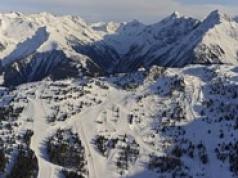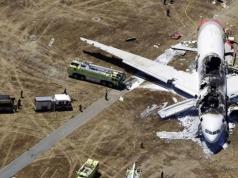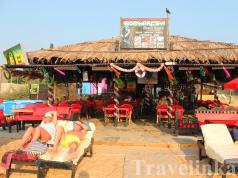The Banya Bashi Mosque is a magnificent structure built on the initiative of benefactor Efendi Kada Seifullah in Sofia, Bulgaria. This is one of the oldest mosques in Europe, its construction was completed in 1567. The name of the structure is associated with the expression “Banya Bashi”, which literally translates as “many baths”. The peculiarity of the mosque is that it is built above a natural thermal resort. You will be able to see how the steam passes through the vents installed at the base of the walls of the structure. The Banya Bashi Mosque is also famous for its large dome and minaret. Currently it is the only one functioning in the city.
The Banya Bashi Mosque is a unique architectural creation that reflects the specifics of Ottoman architecture of the 16th century. The structure was erected from brick and stone by the great architect Sinan. There are small towers at the corners of the mosque. The walls and arches of the prayer hall are made of cut stone and the pillars are made of solid stone and have a beautiful matte color. The arch located above the entrance door is also made of stone, and the central dome is covered with thin tin plates. Every year this building attracts many tourists and pilgrims from all over the world.
Banya Bashi Mosque
The Banya Bashi Mosque is located in Sofia. It was created by the famous engineer and architect Mimara Sinan. At the time of its construction, the Turks ruled the city, and it was they who controlled the city. The construction of the mosque was completed in 1576.
Interestingly, it got its name from the phrase “banya bashi,” which literally means “many baths.”
This cultural monument is unique in that it was built over thermal springs, the creator of which was nature itself. You can see a small amount of steam right inside the mosque. It rises from specially created holes in the ground and passes near the walls of the mosque.
The building is also famous for its dome, which has a fifteen-meter diameter, as well as its minaret, which looks straight into the sky.
Now Banya Bashi Dzhamiya is the only working mosque in all of Sofia. It is the mosque that is considered a monument left by the Ottoman Empire.
Banya Bashi Mosque (Bulgaria) - description, history, location. Exact address and website. Tourist reviews, photos and videos.
- Tours for the New Year Worldwide
- Last minute tours Worldwide
Previous photo Next photo




The Sofia Banya-Bashi Mosque is definitely one of the oldest in Europe, although it is difficult to name the exact exact date of its construction today. However, in the arch above the mosque there is a stone with an unreadable inscription and numbers. It is believed that this is the date of construction indicated in accordance with the Hijra (Muslim calendar). If so, then the mosque was built around 1567. In any case, the mosque remains an impressive monument of Ottoman architecture and a recognizable landmark of Sofia.
The name of the mosque can be literally translated as “many baths.” The reason for this lies in the fact that the mosque was essentially built on top of natural baths, natural hot springs. Some claim that even today you can see streams of steam rising from the walls of the mosque.
The Banya Bashi Mosque was built thanks to Mullah Efendi Kada Seifulla, so it is sometimes called the Efendi Mosque or the Kada Seifulla Mosque.
The Sofia Banya-Bashi Mosque is definitely one of the oldest in Europe, although it is difficult to name the exact exact date of its construction today.
The mosque was built by the architect Sinan in the traditions of Ottoman architecture. It is a rectangular building with a large semicircular dome and four smaller domes surrounding it. Another small building with three smaller domes was built nearby: this extension was erected in memory of the wife of Kada Seifulla. The walls of the mosque are made of brick and stone, row after row, and at the corners there are small turrets that function as supporting elements. The interior walls are also made of stone, as are the monolithic columns and the arch above the entrance. The minaret of the mosque is especially impressive, the beauty of which amazed travelers back in the 17th century.
On the square in front of the mosque there is a pond with decorative fountains. Interestingly, the water in the fountains is hot.
The interior of the mosque has today been carefully restored and maintained in good condition. Inside there is a large hall for men and a women's gallery. The inside walls are painted with verses of the Koran and detailed ornaments. Also worthy of attention are the tiles in the traditional blue and white tones. Since the mosque is an architectural monument, not only Muslim believers can see it.
Banya-Bashi today is the only functioning mosque in the city.
Practical information
The Banya Bashi Mosque is hard to miss: it stands in the very center, on Maria Luisa Street. Across the road is the Central Department Store, and in the neighboring blocks are the Sofia Synagogue and the Catholic Church of St. Joseph. It’s easier to get here on foot from the Serdika metro station along the boulevard (about 200 m).
Story
It is one of the oldest European mosques. Its construction was completed in 1567. The name “Bashi Bath” literally means “many baths.” The most outstanding feature of the mosque is undoubtedly the fact that it was built over a natural thermal spa. Tourists can see with the naked eye how steam flows up the valves at the base of the mosque. The mosque is also famous for its large dome and minaret. Today, Banya Bashi is the only functioning mosque in Sofia. 
Architecture
The main building of the mosque has a quadrangular shape. Among the four corner domes rises a minaret and a central dome. In front there is an extension with three miniature domes. This building was built in memory of Kada's late wife Seyfullah Efendi.
 The Bashi Bath is a very interesting architectural creation that reflects the specifics of Ottoman architectural thought of the sixteenth century. The famous Ottoman architect worked on the creation of such an unusual and luxurious project. The walls of the mosque are made of brick and stone, with rows of red bricks interspersed between the slender rows of stones.
The Bashi Bath is a very interesting architectural creation that reflects the specifics of Ottoman architectural thought of the sixteenth century. The famous Ottoman architect worked on the creation of such an unusual and luxurious project. The walls of the mosque are made of brick and stone, with rows of red bricks interspersed between the slender rows of stones.
In four different corners, just like in the Maqbul Ibrahim Pasha Mosque in Razgrad, there are small towers, under which support structures descend through hoops. There are double supports in the corners of the sixteen-rayed hoops. The walls of the prayer hall, like the arches, are made of cut stone. The columns were built from solid stone and were matte in appearance. The arch over the main entrance is also made of stone. 
The central dome is covered with tin plates. The minaret of the mosque is an elegant architectural work. Architectural expert Evliy Celebi believes that the beauty of this minaret has no equal in the capital of Bulgaria.
Now let's go inside: the interior of the mosque acquired its current appearance as a result of repeated alterations and reconstructions. The last major restructuring took place in the 20s of the 20th century with the financial support of the Turkish Ambassador to Sofia, Fethi Bey.
Something was repaired, tinted, plastered just after the end of World War II. In recent years, restorations have been carried out with the support of Turkish and Arab waqfs. With their help, an underfloor heating system was installed, thanks to which the mosque is warm at any time of the year.  Today, the mosque can accommodate about 700 people for Friday prayers, and up to 1200 for Eid al-Adha! Once upon a time, next to the mosque there were the graves of Mullah Efendi Kada Seifullah and Emin Dede.
Today, the mosque can accommodate about 700 people for Friday prayers, and up to 1200 for Eid al-Adha! Once upon a time, next to the mosque there were the graves of Mullah Efendi Kada Seifullah and Emin Dede.
Banya-Bashi Mosque is an Islamic temple located in the city of Sofia. The initiator and sponsor of the construction was Mullah Efendi Kady Seifullah, which is why the mosque is sometimes also called “Kady Seyfullah” or “Molla Efendi” (by the way, the mullah’s grave was previously located not far from the temple). In the arch above the door you can see a stone with an unreadable inscription and the number 974, it is assumed that this indicates the date of construction - 974 AH (1566-1567). This is one of the oldest mosques in Europe. Its name is translated into Russian as “many baths” - the building was built over a natural thermal spa. Today, the Banya-Bashi Mosque is the only functioning Muslim temple in Sofia.
The main building is quadrangular in shape, crowned by a large dome; in front there is a small three-domed extension, built in memory of Effendi Kady's late wife. Above all this rises a high minaret, from which the temple servant - the muezzin - calls believers to prayer.
The mosque is a fine example of 16th century Ottoman architecture. The walls are built from alternating rows of stones and red bricks. The walls of the prayer hall, arches and columns are made of stone, the main dome is covered with tin plates. Over its long history, the temple has gone through several reconstructions and acquired its modern interior only in the 20s of the 20th century, after restoration work financed by the Turkish ambassador to Sofia, Fethi Bey. In the middle of the century, after the war, minor renovations were also carried out. Over the past decades, the mosque has installed an underfloor heating system with private Turkish and Arab donations.
In its current state, the Banya-Bashi Mosque is capable of hosting up to 1,200 believers for the Eid al-Fitr holiday or 700 people for Friday prayers.
The only mosque in ; one of the oldest mosques in Europe. The exact date of its construction is unknown, but historians suggest that it happened in the 16th century. The construction was financed by Mullah Efendi Kady Seifullah. For this reason, the mosque is sometimes named after him. In honor of the mullah's late wife, there is a small building with three domes in the front part.
The Bashi bathhouse looks like a quadrangular building topped with a huge dome. The walls were erected from red brick and some other stone, alternating each other. During its history, the temple has undergone a number of reconstructions and today is an excellent example of Ottoman architecture of the Middle Ages with modern inclusions. A minaret proudly rises above the building, from which the muezzin’s call to prayer can be heard.
It is interesting that the name of the mosque does not at all correspond to its intended purpose. After all, “bath bashi” from Turkish means “many baths.” People say that it was built on the site where natural baths were previously located. This is where the name came from. The main architect was the famous Sinan, whose works include all the most magnificent buildings in Istanbul.
Due to the fact that Bath Bashi is, first of all, an architectural monument, entry for tourists is also open. On special holidays, the number of visitors to the mosque exceeds one thousand. Pilgrims and lovers of medieval architecture from all over the world flock here. Geographically, the main Islamic shrine of Sofia is located 300 meters from the central metro station Serdika.
Photo attraction: Banya Bashi Mosque








